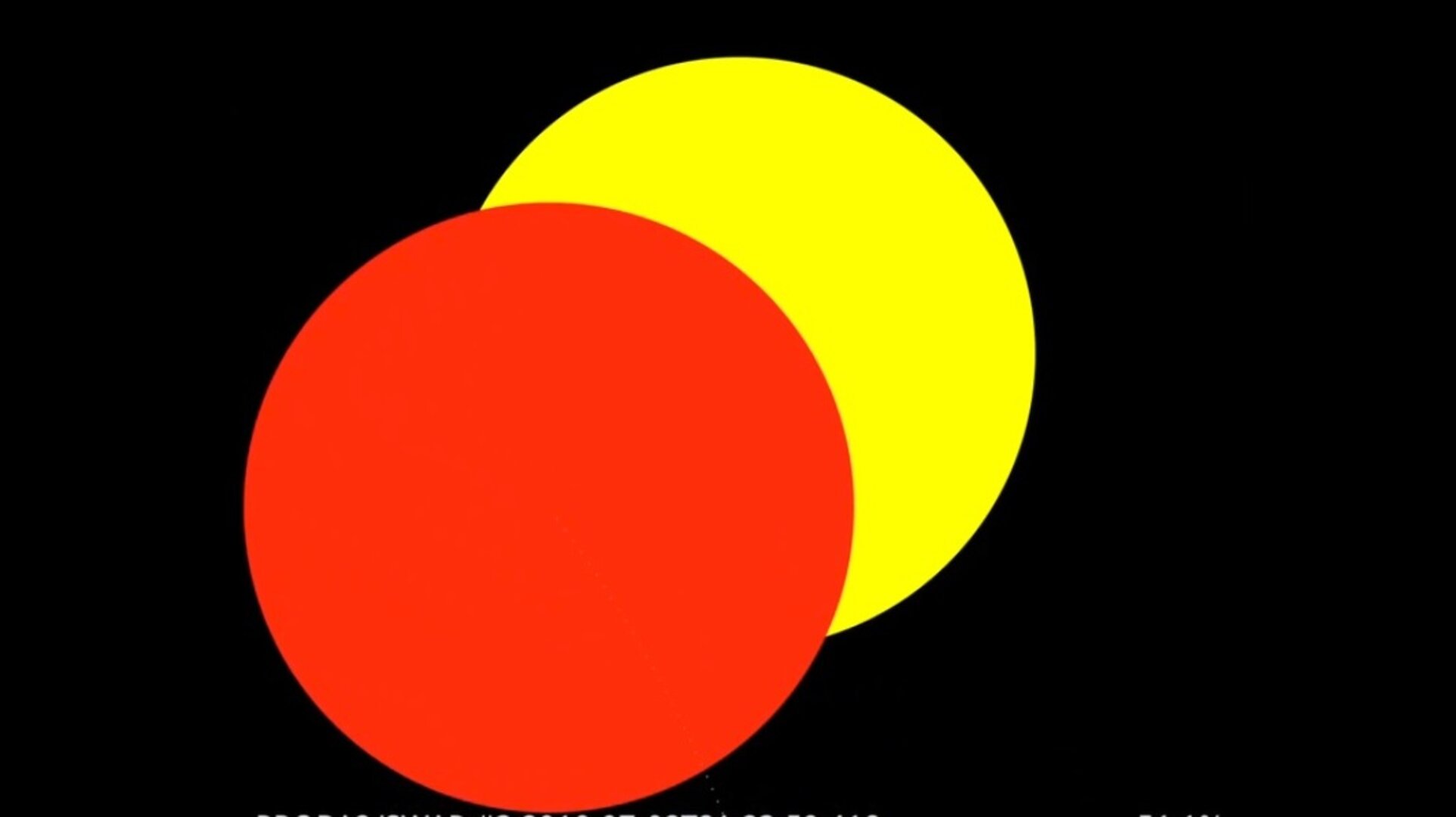Proba-2’s predicted view of 2 July eclipse
On 2 July 2019, a total solar eclipse will be visible from the South Pacific, falling over land for some parts of Chile and Argentina, with other South American countries enjoying a partial eclipse.
Total solar eclipses occur thanks to the fact that the Moon’s average distance from Earth is just right for it to appear as the same size in the sky as the significantly larger and more distant Sun. When the Moon slides directly between Earth and the Sun it appears to cover our star completely, temporarily blocking out its light and creating a total solar eclipse for those along the narrow path cast by the Moon’s shadow.
From space, ESA’s Proba-2 satellite, which orbits Earth 14.5 times per day, will capture four partial eclipses as it dips in and out of the Moon’s shadow; a simulated view of what is expected 2 July is seen in the animation shown here. Click here to see how Proba-2 observed two partial eclipses during last year’s celestial event.
Back on Earth, a group of ESA astronomers from the CESAR educational initiative will be observing the eclipse from the European Southern Observatory’s La Silla Observatory in Chile. The team is one of a small group selected to perform astronomical observations for science and outreach purposes during the eclipse.
The eclipse will start just before 15:24 local time at ESO (21:24 CEST) and will conclude at around 17:47, just before sunset (23:47 CEST).
ESO aims to provide a live webcast of the eclipse, should weather conditions be favourable and internet broadband perform as expected. The CESAR team also plan to provide live coverage as well as share images during and after the celestial event.



